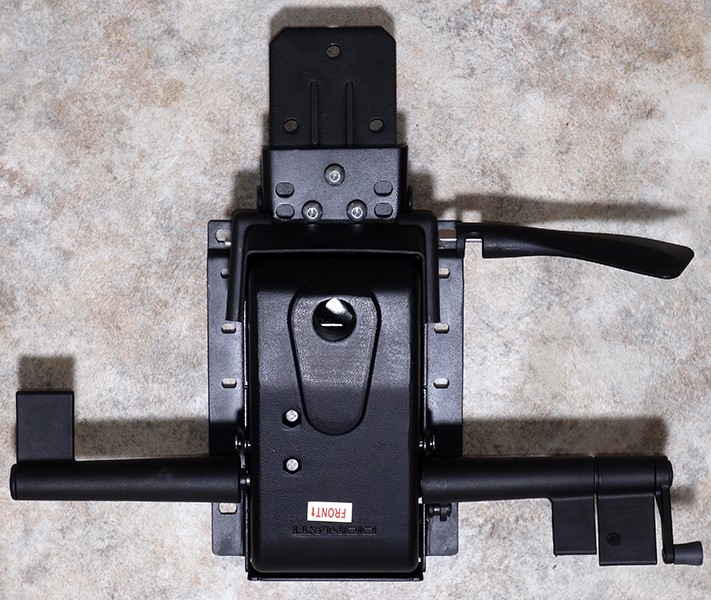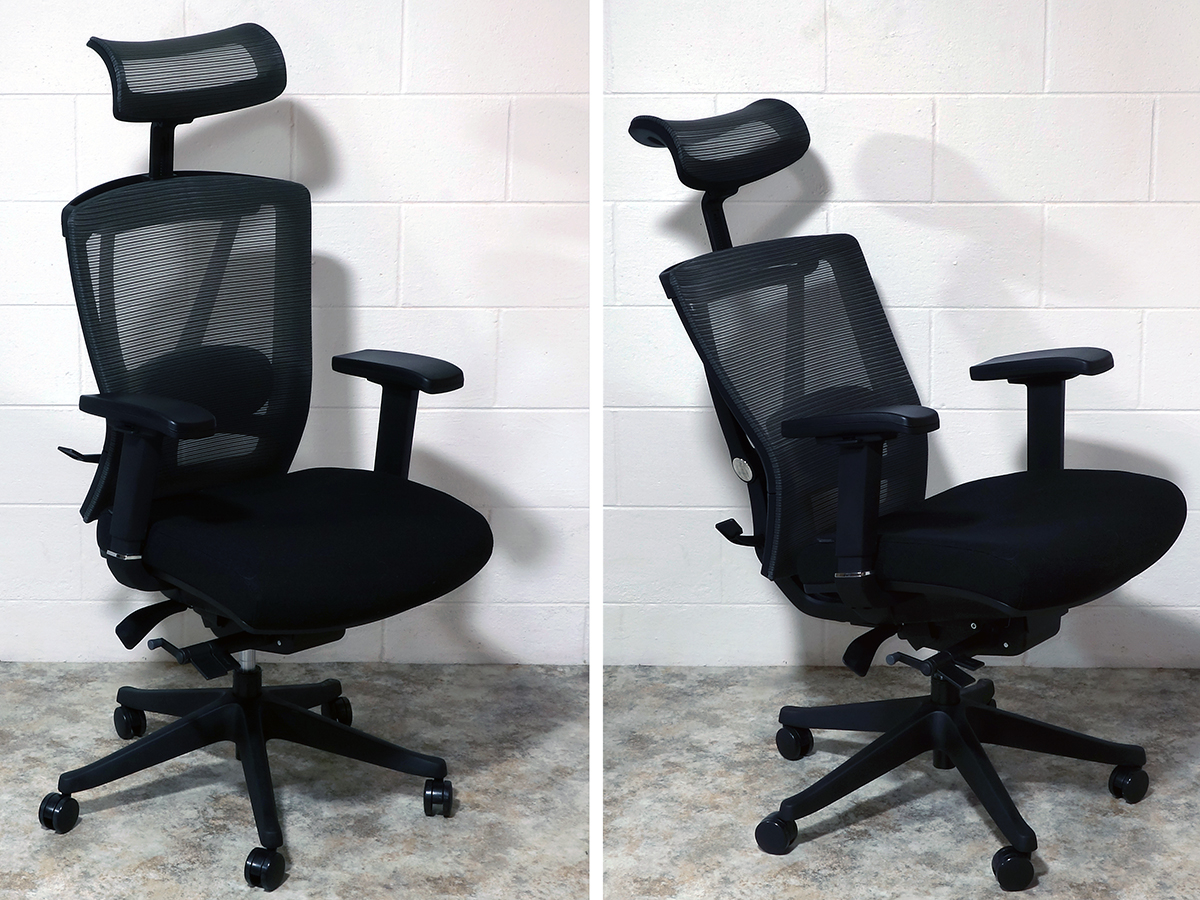Autonomous A70 Ergochair 2, Hands On
Ergonomics aren’t exactly a secret sauce, but a science, and that science says you don’t need G-Force hindering side bolsters and shoulder holes for a 5-point racing harness on a chair that rarely moves more than a couple miles an hour. The trump card in the gaming chair market, the things that separate a gaming chair from an office chair are primarily aesthetic. Autonomous wants its Ergochair 2 in front of your desk, no matter whether that desk is in an office or a den.
We’re accustomed to high-back chairs and were surprised to see that the A70 ships in a much smaller box due to its removable head rest. The package includes the back, head rest, seat, arm rests, base, a Donati-brand multi-way tilt mechanism, an extremely short pneumatic lift, a hardware kit, five wheels, and an instruction manual.
Significant Other warning: The hardware pack includes spares (lower-right corner), which you’ll want to hide. Rumors of leftover parts never die, nor will the impact on your reputation as an assembler/tinkerer/fixer of anything. You’ll understand better in 10 years when your spouse hands you a $200 electrician’s bill to replace a $2 switch plate because “you couldn’t even assemble a chair”.
The A70’s MDF set pan is thicker than those of budget chairs, and covered in a plastic shell. But it’s still MDF.
The seat mechanism includes a recline release lever on the left. The front-right stalk includes a lumbar support adjustment crank, lift release, and seat pan depth release. A twist handle towards the back of the right side unlocks the seat pan tilt.
Another handle on the back allows the back to be arched forward. Leaning back while activating that handle pushes it back to its original position. The lumbar support can also be slid down about 1.75”, and the headrest is shown slid up 3” from its lowest level.
Though the seat pan adjusts independently only from a horizontal to a 7° forward-tilt, it also tilts back 7° from horizontal when the chair is fully reclined. The makes the chair feel like it’s reclined farther than its limited 20°.
Get Tom's Hardware's best news and in-depth reviews, straight to your inbox.
Seat Of The Pants
Being acutely familiar with similar-appearing lower-priced models, we were very pleased with all of the A70 Ergochair 2’s extra features. For example, the crank handle that adjusts the lumbar support depth is a wonderful upgrade from lower-priced models that require users to get out of the chair to adjust. Once you dial in all the adjustments to your own body shape, the thing feels very nice.
That said, the A70 isn’t a complete alternative to premium furniture: The lightweight seat padding is roughly twice as thick as the cheaper models we’ve tried, but it still feels like cheap padding, as does the upholstery. Likewise, the hard-plastic wheels roll easily but have no urethane tires. The A70 also lacks tension adjustment for the recline function, so most users will probably want to leave that locked unless they’re planning to lay back for a few minutes or more. It’s a shame that such a nicely-designed chair would be finished with so many shortcuts.
The adjustable-depth seat pan is a nice touch and slides forward quite easily. It doesn’t have a return spring, though, and grabbing the arm pads to slide the seat pan back reveals another unexpected oversight: The adjustable arm pads don’t lock. Users can slide them inward and outward, forward and back, but bumping them afterward causes them to move into an unintended position. Only the height adjustment is mechanically latched.
The lumbar support fits our backs at its maximum height (7.5” on-center above the seat base), which is shown in the photos. If it doesn’t fit yours, it can only be slid downward (up to 2.5”, approximately).
But the A70 is still comfortable once configured to the user’s body, and it even has advantages over some of the gaming chairs we’ve tested: Those race-seat-inspired chairs used nothing more than a pair of pillow for lumbar and head support, and the lumbar pillow always felt hot, as did the synthetic leather seat upholstery. But there’s a different reason why the Ergochair 2 isn’t at our 29”-high desk right now: It’s only 20” high at its limit. Sit down, sink in, and suddenly you’re only 19” off the floor. We’ll probably replace the lift with the upgraded part we left on one of our worn-out chairs, if we can get that one out (undamaged). But until we change the lift, the Ergochair 2 is just another place to sit away from our desk.
Buyers who reserved their Ergochair 2 before the first shipment got a special $200 introductory price, which seems fair but certainly not a bargain. Upgrades from our similar-looking $140 chair include the side (rather than rear) adjustment for lumbar support, an angular adjustment for the back frame, a stronger attachment point for the headrest, and seat pan adjustments. Current pricing for the A70 Ergochair 2 ranges from $270 to $310 at the Autonomous website, depending on the color chosen.
| Product | Ergochair 2 |
|---|---|
| Back Height (to seat top) | ~30" (at headrest max) |
| Seat Width between bolsters | No Bolsters |
| Seat Depth To Back | ~20 to 21" (adjustable) |
| Armrest Spacing | ~16.5 to 19" (includes mounts) |
| Armrest Height | ~7 to 10" |
| Seat Height (front) | ~18 to 20" at flat angle |
| Seat Height (rear) | ~18 to 20" at flat angle |
| Backrest Angle | ~90° to 110° |
| Seat Angle Adjustment | ~7° forward |
| Construction | Plastic frame, MDF pan |
| Upholstery | Cloth seat, mesh back |
| Weight | ~48.3lbs |









